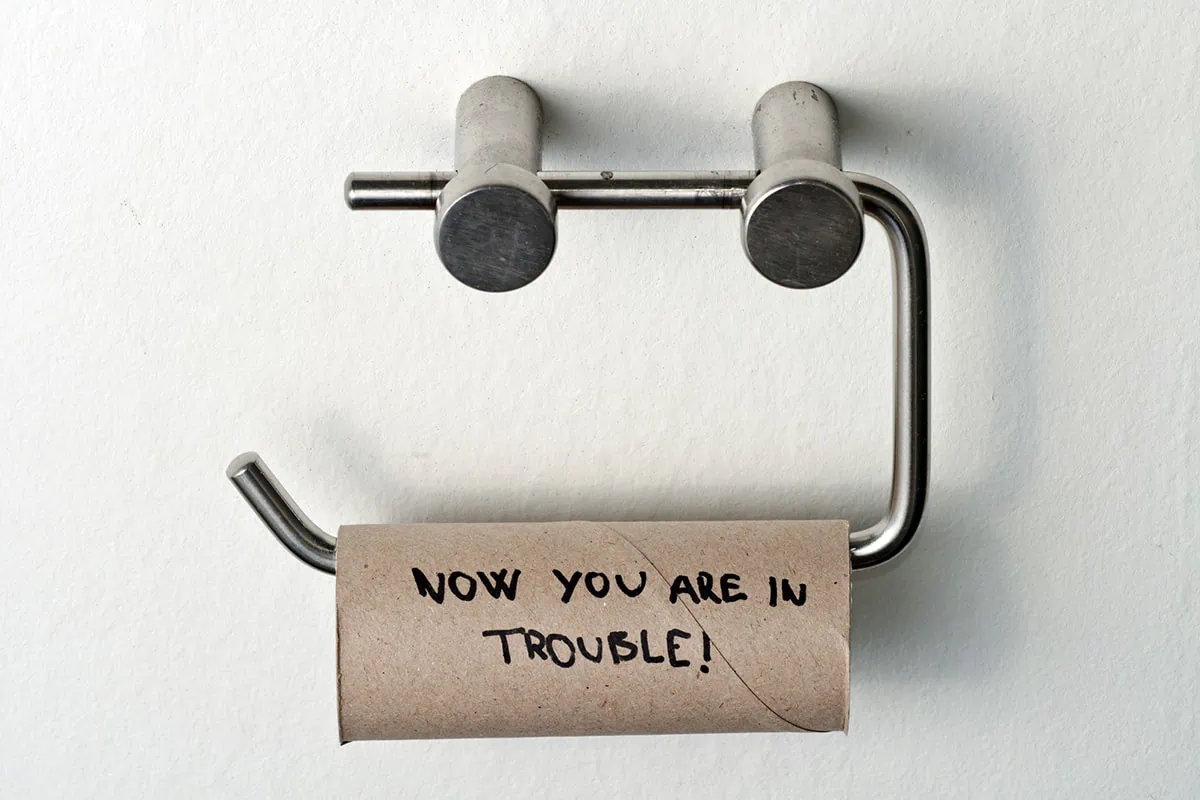The United States has enjoyed some level of population growth virtually every year for more than a century. But that doesn’t mean every state is always growing in lockstep.
Here’s a for-instance: According to U.S. Census Bureau estimates, the country gained more than 1.6 million people in 2023. However, while 42 states and the District of Columbia experienced population growth … eight states actually saw their populations fall. Collectively, those eight states faced a population decline of 249,161.
So, why do these population trends matter? Increases in the people coming into a state can help spur growth and development. Conversely, population declines can have an adverse effect on a state’s economy, not to mention employers’ ability to fill important jobs.
Furthermore, the numbers of U.S. representatives for each state are determined by a population formula, which is calculated each decade. In short, if a state’s population decreases too much, the state could receive a lower number of representatives. If a state’s population decreases too much, it could lower the number of representatives their state has.
Today, then, I’ll take you through which American states are losing population, and we’ll discuss the possible reasons as to why.
Table of Contents
Why Do State Populations Decline?

Country-level population growth is determined by births, deaths, and international migration. For states, the same is true, but domestic (state-to-state) migration becomes an additional factor—and in many cases, it’s a significant one.
People change states for many reasons—new jobs, moving closer to family, maybe just a change of pace. And now that remote work is more popular, fewer employees are tied to specific locations for work and other factors can play a greater role in determining where to live, whether it’s high cost of living or maybe taxation of Social Security benefits.
According to a survey by Home Bay, the top five reasons Americans moved in 2022 were as follows:
— Better quality of life (24%)
— Lower cost of living/home prices (23%)
— Upsizing (such as getting a larger home) (22%)
— Work flexibility (22%)
— To live closer to family or friends (21%)
Respondents considered the biggest factors in what constitutes a high “quality of life” to be safety and affordability. And it appears some of these factors came into play in 2023 when, while most states were gaining population, eight states went backward.
However, some states suffered population decline not because residents were leaving in droves, but because of natural causes—namely, the statewide number of deaths was higher than the number of births.
Methodology

This article uses Bureau of Labor Statistics estimates of the components of resident population change for the United States from July 1, 2022, to July 1, 2023.
The data set sorts population changes into three components: births, deaths, and net migration. Broken out this way, you can get a better idea of why a population change is occurring for a given state. (For example, if more people are born than die and net migration was negligible, you can conclude a state’s population grew primarily because of higher births.)
Where net migration was the greatest factor, we did further research into what might be affecting outflows from the state.
There’s also a “residual” number of population change that the BLS can’t attribute to any specific demographic component.
States That Are Shrinking

Is your state experiencing population growth or decline? Keep reading to find out—and find out why.
For each state, we list births, deaths, net migration, residual, and net population change. To get net population change, we simply started with the births number, subtracted deaths, then added net migration and residual change. (Births – Deaths + Net Migration + Residual = Net Population Change)
#8: West Virginia

— Births: 17,263
— Deaths: 25,929
— Net migration: 4,696
— Residual: 6
— Net population change: -3,970
West Virginia’s slight population decline between July 1, 2022, and July 1, 2023, can largely be chalked up to population change—the state had 25,929 deaths, easily outstripping not just the state’s 17,263 births, but the nearly 4,700 net new residents it added through migration.
Deaths could be an outsized force on West Virginia’s population changes in the near future, too. The state ranks fourth by highest median age.
A reason for optimism? Many of West Virginia’s newer residents are from Generation Z. According to a 2023 study by Hire a Helper on national moving trends, West Virginia enjoyed an impressive net 138% gain in Gen Z moves—the highest among all 50 states.
Related: 7 Best Fidelity ETFs for 2024 [Invest Tactically]
#7: Hawaii

— Births: 15,167
— Deaths: 12,812
— Net migration: -6,566
— Residual: -50
— Net population change: -4,261
Population loss is nothing new for Hawaii—the state’s ongoing population decline has reached an eighth consecutive year. Indeed, it lost a little more than 4,200 residents in 2023 despite births outpacing deaths by roughly 2,350 people.
The culprit is negative net migration, and it’s very possible that finances are the predominant driver of that. According to the Council for Community and Economic Research (C2ER), which among other things provides research and data about the cost of living across the U.S., Hawaii’s overall cost of living is the highest in the nation.
Many food products and other daily essentials have to be imported from the mainland, which increases costs. The state is also highly dependent on tourism, which can raise prices for goods and services. And, lest we forget, Hawaii is a tropical paradise—even with net negative migration, housing supply is so low that it still outstrips supply, keeping home prices high.
Related: States With the Highest Minimum Wages [How States Stack Up in 2024]
#6: Oregon

— Births: 39,046
— Deaths: 43,285
— Net migration: -1,747
— Residual: -35
— Net population change: -6,021
Oregon has suffered a decreasing population for the second year in a row. The largest part of its 2023 negative net population change can be attributed to more deaths than births, but more people also migrated out of the state than into it.
A United Van Lines Movers study found that the top reason people left Oregon in 2023 was for “jobs,” and the second most prominent reason was “family.”
“Jobs” is a fairly vague answer, of course. Digging in, it’s unlikely to be associated with the state’s unemployment rate, which is only slightly above the national average—lack of jobs isn’t necessarily the problem.
One possible reason for people moving is how much their job income is taxed. For 2023, Oregon had the nation’s fifth-highest income tax rate, at 9.9% for single filers earning more than $125,000 (and married filing jointly filers earning more than $250,000).
Related: 12 Best Apps That Give You Money for Signing Up [Free Money]
#5: Pennsylvania

— Births: 129,489
— Deaths: 140,568
— Net migration: 951
— Residual: -280
— Net population change: -10,408
Pennsylvania is the first of these states that has lost more than 10,000 people, but its losses have nothing to do with the state’s appeal.
Like with West Virginia and Oregon, a higher number of deaths is to blame for the Keystone State’s net negative population change. There were over 11,000 more deaths than births, and migration patterns couldn’t come close to making up for that.
Pennsylvania does have an older population—it ranks seventh-oldest by median age. According to the Center for Rural Pennsylvania, 24 of the state’s 67 counties have more residents aged 65 or older than age 20 or younger. This aging population could have contributed to last year’s losses … and could contribute to additional population decline in the coming years.
That said, more people found Pennsylvania worth moving to than moving from last year. The state gained nearly 1,000 people from migration alone.
Related: 15 Alarming Gen X Retirement Statistics
#4: Louisiana

— Births: 56,209
— Deaths: 50,094
— Net migration: -20,418
— Residual: 29
— Net population change: -14,274
The South, as a region, actually enjoyed robust population growth in 2023. However, two Sun Belt states were an exception to that rule—and Louisiana was one of them.
There’s no blaming natural causes. Births in the Pelican State outstripped deaths by more than 6,000. No, in Louisiana’s case, it was a clear outflow that saw over 20,000 more people leave the state than joined it.
According to a United Van Lines survey, more than half of respondents listed “jobs” as their main reason for exiting Louisiana. And indeed, the state has both the fourth-lowest median household income in the U.S., as well as the second-highest poverty rate. Given that, it shouldn’t be a surprise that many residents seek higher-paying jobs elsewhere.
Louisiana is also prone to hurricanes and flooding; after particularly destructive natural disasters, some people have no choice but to start over, and they sometimes choose starting over somewhere else.
Related: Say Goodbye! These 10 Things Are Fading Out of Existence
#3: Illinois

— Births: 127,235
— Deaths: 116,782
— Net migration: -43,347
— Residual: -68
— Net population change: -32,826
Illinois suffered a massive outflow of people from the state last year, more than countering excess births and suffering the third-worst population decline of 2023.
While births exceeded deaths by more than 10,000 last year, over 43,300, on net, moved away from the Land of Lincoln.
According to United Van Lines’ study, “jobs” was the No. 1 reason cited by people exiting Illinois, with 26.1% of respondents listing that as a primary reason (followed by “retirement” and “family.”)
Illinois’ unemployment rate of 4.7% as of January 2024 was a full percentage point higher than the national rate. Another possible deterrent is the state’s high property tax rate, which at 1.97% is the second-highest in the U.S.
Related: 20 Big-Ticket Items Worth Splurging On
#2: California

— Births: 414,120
— Deaths: 302,704
— Net migration: -187,389
— Residual: 550
— Net population change: -75,423
California had more people to lose than any other state, and lose it did—but the big overall number isn’t nearly as bad as it looks.
California actually gained a large number of people through natural causes, as births exceeded deaths by more than 111,000. Instead, California’s negative net population change is entirely because of net migration, with over 187,000 more people leaving the Golden State than entering.
But at more than 75,000 net fewer people, that’s a smaller percentage decline, based on total population, than states like West Virginia and Hawaii that only lost a few thousand residents. In fact, it’s the third smallest percentage population decline on this list.
Still, California can’t be happy to have lost nearly 190,000 people who thought the grass was greener elsewhere. We can get something of an idea of what they were looking for, though. Real estate website Redfin tracked and analyzed where users were looking for homes from August 2023 to October 2023, and it showed people in San Francisco were most frequently searching for homes in Seattle, while people in San Diego and Los Angeles were most frequently searching for homes in Las Vegas.
Washington state has a lower cost of living than California, which has the third-highest cost of living in the U.S., and Las Vegas has a significantly lower cost of living, thanks in part to lower home prices. A lack of state income tax would also be a pull to people weary of California’s state income tax, which is the highest in the nation. (As someone who briefly lived in Las Vegas a few years back, I saw plenty of instances of California migration even then.)
Related: Federal Tax Brackets and Rates
#1: New York

— Births: 207,450
— Deaths: 165,914
— Net migration: -142,911
— Residual: -609
— Net population change: -101,984
New York’s net population change in 2023, at more than a hundred thousand people lost, isn’t just the worst on a nominal basis—its percentage decline of roughly 0.6% makes New York the country’s fastest shrinking state.
It wasn’t natural causes—the Empire State had 41,536 more births than deaths last year. Instead, it was a net negative migration of nearly 143,000 people. And at least on the financial side of things, a few factors seem likelier than others in explaining New York’s population shrink.
According to C2ER data, New York has the fourth-highest cost of living of any state. Its state income tax is third-highest in the nation, only trailing California and Hawaii. And a few people could just be leaving to find any opportunity—New York’s unemployment rate of 4.5%, while on the decline, is still higher than the 3.7% national average.
Related: The 7 Best Vanguard ETFs for 2024 [Build a Low-Cost Portfolio]
Related: Enough With Deceptive Drip Pricing: How You’re Being Tricked + How to Stop It

Drip pricing is a misleading way of showing a lower price to consumers upfront only later to find out the final price is far higher. Surcharges, convenience fees, taxes, required upgrades, and more. We cover examples of drip pricing tactics and ways to combat them.
Related: Stop Shrinkflation! 10 Products Affected + Tips to Save Money

Shrinkflation is the deceptive practice of making products smaller instead of raising costs to cover any rise in the cost of producing that product. We cover several examples of shrinkflation and tips to save money.
Related: 9 Best Monthly Dividend Stocks for Frequent, Regular Income

The vast majority of American dividend stocks pay regular, reliable payouts—and they do so at a more frequent clip (quarterly) than dividend stocks in most other countries (typically every six months or year).
Still, if you’ve ever thought to yourself, “it’d sure be nice to collect these dividends more often,” you don’t have to look far. While they’re not terribly common, American exchanges boast dozens of monthly dividend stocks.
Related: The Best Fidelity ETFs for 2024 [Invest Tactically]

If you’re looking to build a diversified, low-cost portfolio of funds, Fidelity’s got a great lineup of ETFs that you need to see.
In addition to the greatest hits offered by most fund providers (e.g., S&P 500 index fund, total market index funds, and the like), they also offer specific funds that cover very niche investment ideas you might want to explore.
Please Don’t Forget to Like, Follow and Comment

Did you find this article helpful? We’d love to hear your thoughts! Leave a comment with the box on the left-hand side of the screen and share your thoughts.
Also, do you want to stay up-to-date on our latest content?
1. Follow us by clicking the [+ Follow] button above,
2. Subscribe to The Weekend Tea, our weekly newsletter to read more about investing, spending, taxes, and more, and
3. Give the article a Thumbs Up on the top-left side of the screen.
4. And lastly, if you think this information would benefit your friends and family, don’t hesitate to share it with them!





